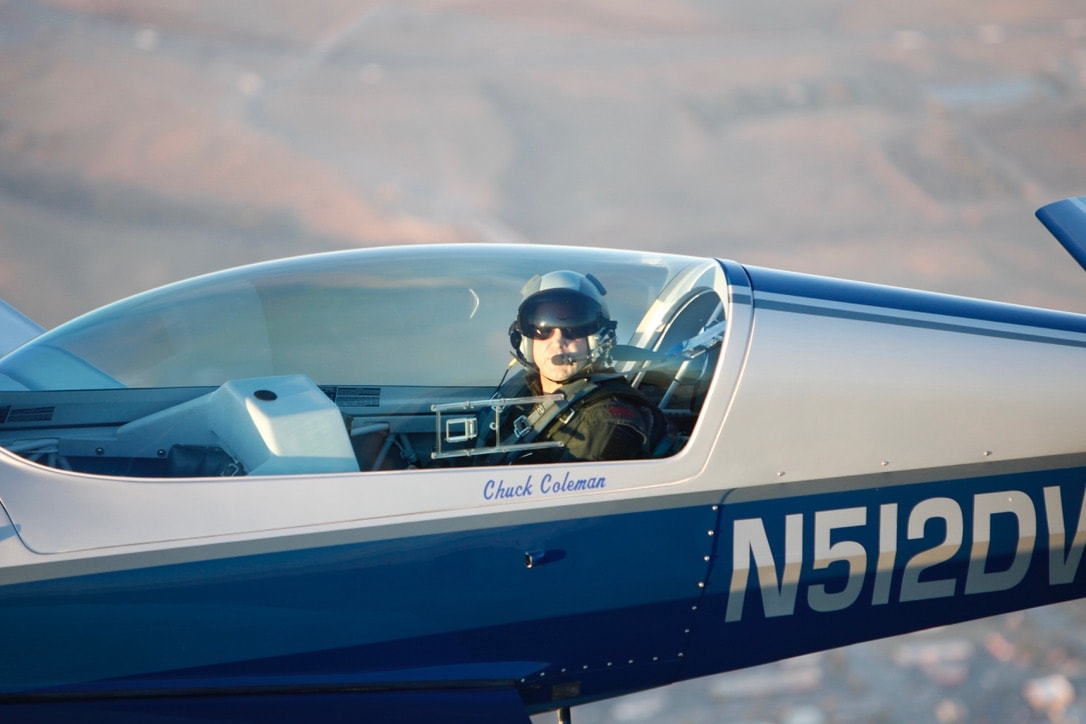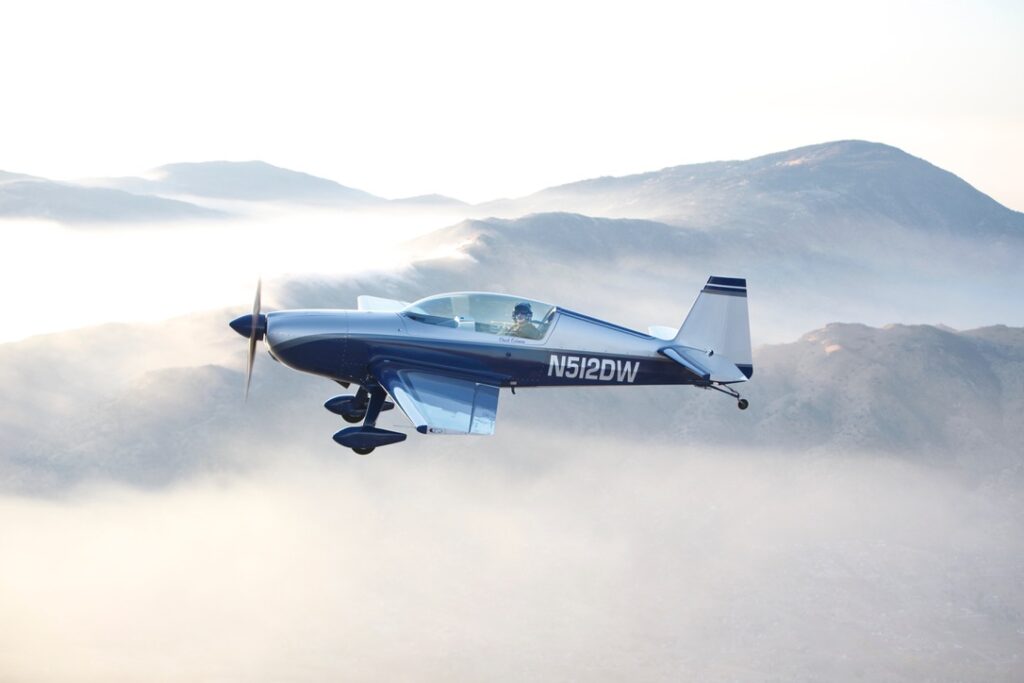
Cruisin’ the danger zone
Behind the airborne action in “Top Gun: Maverick.”

Behind the airborne action in “Top Gun: Maverick.”
A vague call led Chuck Coleman (BSE ME ’85), to a small airport in the desolate desert town of Inyokern, California on a September morning in 2018. A few minutes later, he was shaking hands with Tom Cruise.
Coleman had been tapped by the production company behind the Hollywood blockbuster “Top Gun: Maverick” for his expertise in flying an Extra EA-300, the world’s most advanced aerobatic stunt plane.
The U-M alum had been called on for various aviation documentaries and short films throughout his career. But nothing like this.
A trained pilot and aviation enthusiast in real life, Cruise insisted that the sequel’s story could only be told one way: using real footage of real actors in real F/A-18 Super Hornet fighter jets. He had designed an extensive flight course that condensed two years of flight training into three grueling months of training and conditioning, dubbed “Tom Cruise’s School of Flying.” And Coleman’s resume, with over 10,800 hours of flight time and performances in hundreds of airshows, made him Cruise’s perfect co-instructor.

By October, classes for “Tom Cruise’s School of Flying” were in session at airports and naval bases in Venice and San Diego, California. Coleman would spend roughly 100 days over eight months conducting 140 G-force tolerance flights in an Extra EA-300 with actors Glen Powell, Miles Teller, Monica Barbaro, Jay Ellis, Lewis Pullman and Danny Ramirez.
Eyeballs rolling in their sockets like marbles, the face-morphing pull of gravity, instantaneous fainting and vomiting—the G-force of aerobatic aircraft stunting is not for the faint of heart. And unlike the first film, the actors in “Top Gun: Maverick” would actually be in the cockpits of the F/A-18s, acting and speaking their lines of dialogue mid-flight. Capturing usable footage hinged on building the actors’ aerial tolerance and confidence.
“The main thing is when people first start flying, especially aerobatics, they’re nervous, and that’s not the look for ‘Top Gun’ pilots,” Coleman said. Coleman took about 20 flights with each actor, introducing them to aerobatic maneuvers, pulling loops and rolls as they ripped through the air, braving up to eight Gs. After completing the training, the actors took flight with U.S. Navy pilots in F/A 18 Super Hornets, each equipped with six IMAX-quality cameras.
Following four years of training, filming, production and pandemic delays, “Top Gun: Maverick” was released in theaters in May 2022. With nearly $1.5 billion in worldwide box office sales, the film is the 11th-highest-grossing film of all time and Cruise’s highest-grossing film ever.
“It was the result of a lot of things—great teamwork, the realistic camera footage, the actors, the confidence, everything just came together,” Coleman said. “It’s just so cool that I got to be a part of it.”
Adapted from a story written by Katie Frankhart, University of Michigan Alumni Association